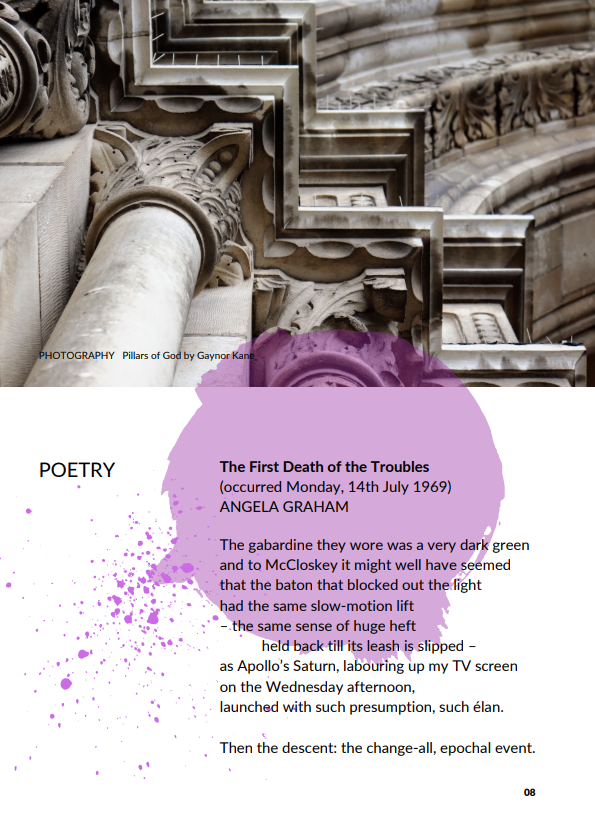
The launch issue of https://linktr.ee/thebelfastreview
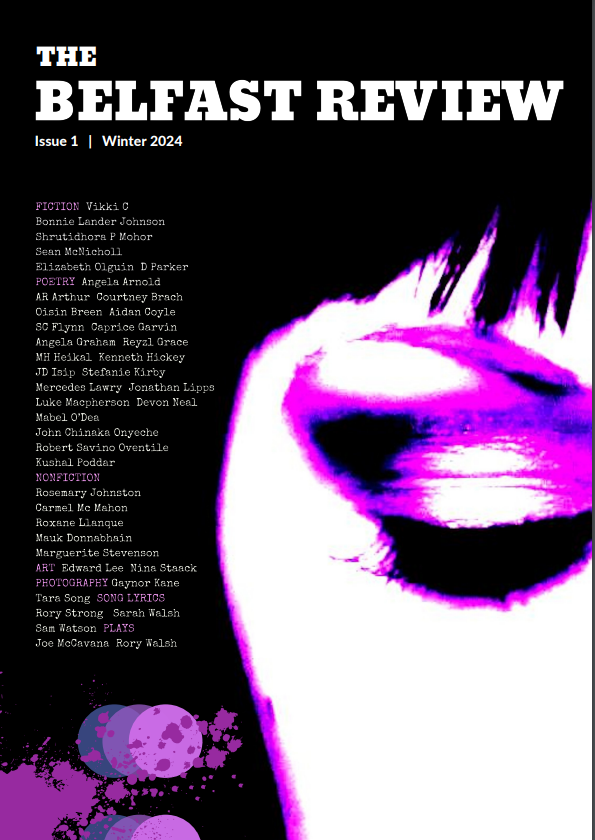

The launch issue of https://linktr.ee/thebelfastreview

My review of Damian Smyth’s latest poetry collection appears in The Cardiff Review but as that site is temporarily unavailable please see below
https://www.cardiffreview.com/review/compassion-and-reciprocity-irish-street-by-damian-smyth/
Irish Street follows Damian Smyth’s pamphlet and six collections of poetry. Once again, he roots himself in a specific place, his homeplace. This is the Ulster equivalent of y filltir sgwar, the square mile, that intimate locus of birth and growth, where one knows and is known. The three streets at the centre of the small town of Downpatrick near Strangford Lough on Northern Ireland’s east coast epitomise the three cultural strands of the locality: English Street (the title of Smyth’s preceding collection), Scotch Street and Irish Street. From this core, Smyth takes the reader deep, high and wide in terms of location, time and perspective. This is also a collection which exalts compassion and reciprocity.
The book’s structure is essential to its success. Its three epigraphs signal cultural boundaries, cultural assimilation and the manipulation of minorities, and the dangers of colonialism – in my view; they are allusive, after all. The 123 poems are divided into 4 parts. There is no index but a section, In Other Words, which is a glossary of explicatory or allusive references germane to many of the poems. This is a technique Smyth has used before. The section’s title indicates that it exists, not because the poems have failed in their task, but because reality is so rich that there is more than one way of communicating it.
Unusually, a specific title may be shared by several poems. There are, for instance, 3 poems entitled, Hero, 2 in the Lumen section and 1 in Metempsychosis, surely an invitation to cross-reference. This unabashed re-visiting of a topic typifies the poet’s confident handling of the material and, also, his remarkable spiralling approach to it: a moving through a topic and a return to it at some different level or point of access.
The book is also a kind of palimpsest: accounts are re-presented; a place is re-visited, a character re-appears or is re-considered. This sense of experience and place existing at many levels and within many time-frames gives the work great coherence and depth.
The collection’s scope is flagged from the start. The opening six poems are Mappa Mundi, Downpatrick, Irish Street, Blood, The Past, Unhome. There you have it: global, local, specific, internal/familial, time/inheritance, and home. We are in the hands of a poet who both knows where he’s going and also knows that there will be surprises for him, and us, along the way.
The final section, Marks, lists the page numbers of 189 topics or things that feature in the book. For instance, Home comes in at 23 references; Angels 15; Lyra McKee 1, Robotussin 1, Wrapped in a rag 1. This listing and enumeration reinforce the book’s perception of the variety and plenitude of life.
Mappa Mundi, the first poem in the book, in describing the sketching of directions for a tourist, deftly introduces us to the bewildering fact that we exist and are capable of seeing ourselves existing: the subjective and objective perspectives:
The Quoile as broad as the wide Missouri, your own street emerging
Detailed to such an extreme that, indeed, that is yourself you see appear
In miniature at the end of the road beside a car that’s pulled up,
In your tinier hand a sliver of paper on which you are already sketching
Yet another version of things you again feature in, which deeper scrutiny,
Nuanced enough, will verify as perfect in every account, right down
Into the microscopic valleys and peaks of the manila; and so on
Forever, even when you – that must be you – finally realise the sense it makes:
Endings are beginnings: that every road out and round is also a road in.
There are several unreliable narrators. We meet the late Paddy The Bump (who features on the cover) in the seventh poem and in five others. In Vladimir Komarov Paddy asserts he has seen a doomed Russian space capsule fall to earth:
When Paddy The Bump
Was convinced he had seen that capsule spin,
Already a Catherine wheel, in the sky over the Dam Hill,
We were ripe to believe the intimacy of witness:
That was his news, though it didn’t happen –
Not as he told it. There had been the radiance of Soyuz
Dropping like a tooth out of God’s mouth …
Paddy is ridiculous in his assertions and his appearance but, in the long poem, Apparitions, the poet scrutinises closely that photograph of him which is on the book’s cover:
My face as close to his face now as the face
Of John Doris, optometrist, who settled upon
Those orotund cheekbones and along that bald pate,
Long-legged glasses, lenses so thick they left him surprised
For the rest of his life, the better to see with.
This is closer than any could have wished for at the time,
Or tried for: flesh has its own luminosity, a light
Proximity will make unbearable, if not shielded by love.
By the poem’s concluding lines, the poet has reached a microscopic level of engagement:
In the woods of his brain, where I am now, listening, …
At this depth, the depth which love affords, Paddy has his dignity, his admirable selfhood.
In Buried Treasure, one of many poems about the proximity of the dead and the living, local characters live on:
There are dips and hollows where no marker is, but if you wish, I can map
Where people reside inside the planet, perplexed, their bony earthenware heads,
Turned like seashells to pick up the chatter of the living down in the town,
In the Arkle Bar or the John de Courcy, though no attraction will draw them out,
Deposited as they are behind a locked door, just yards from the stool they had sat on.
What comfort there is in their company, in their entirety guardians of the commonwealth.
We are offered many excellent images to savour. Of whins: They switch their floodlights on from dawn … and the canopy of those gnarly and small woods; or a path which drowns face down in a foot of river … and the black baby… / (Her fists like tulips, the soles of her feet already ruched as maps) …
Smyth favours long lines of free verse, carefully parsed in a variety of stanza lengths. Diction is colloquial and fluid except when he exploits recherché vocabulary for effect, as in Flight Into Egypt: the foliate spandrels of the Rococo tondo frame, with tiered rocaille cartouches…. There are successful sonnets, in both strict and looser form, and several poems in rhyme.
He is fond of bracketing a long parenthesis between an assertion and its conclusion. For instance, Flight Into Egypt opens with the line: But if this isn’t the single most important artefact in the possession of Ulster … – and concludes 11 lines later with: … then I don’t know what is. Pale Blue Dot goes further during its 25 lines: It is one thing … And it is another thing … But another thing entirely …The effect of this is breath-taking and dizzying but in a virtuoso way. The poetic control demonstrated justifies our hope that, having taken us far and wide, we will be landed safely on new ground.
Touches of wry humour abound, my favourite being the perceptive 5-line poem, Dipper which treats of a sheep in terms of the Egyptian royalty and a figurine from Ur / Gold leaf and lapis lit from within; those ankles, slim, elegant, worshipped.
The collection’s second poem, Downpatrick sets the tenor of the book by its depiction, as though in a miniature, of the single thing that might save its soul / When pestilence falls, rescue each mean inhabitant from ruin in every century / To come … and that is the kindness of the inhabitants towards the son of a pharmacist who tended to those who had nothing, for nothing. He has been merciful to them; they reciprocate by being gentle and generous towards his vulnerable son. Smyth makes clear that this reciprocity is in the reach of any town and, by implication, any of us.
Irish Street, Downpatrick
Photo below, the junction described in ‘St Brigid’s Day’
Because you could drop a rushy cross on the towncentre
And it would fit its articulate legs up each of the four streets,
Like its hips are broken, it’s clear that all the tales are true,
Especially the most unlikely.
Irish, English and Scotch Streets meet in exactly this way, as anyone who has ever seen them, or seen a St Brigid’s Cross, will agree.

Available from Irish Street – templarpoetry in paperback 12.00 or hardback 14.99.

Black Bough Poetry/Barddoniaeth Y Gangen Ddu has produced its second Christmas and Winter-themed anthology and it would be an ideal Christmas gift. Over sixty short poems by poets from around the world are beautifully enhanced by linocuts from Gower-based artist Emma Bissonnet .
Black Bough specialises in imagist micro poems: short, and sharp or sweet, with the emphasis on the visual. These poems take the reader on a tour of the feast and the season. Perfect for dipping into.
Available here
Edited by Matthew C. Smith and colleagues, Damien B. Donnelly and M.S.Evans.
I’m delighted to have this poem included.
CHRISTMAS
The smallest words mean the most
Joy
Hope
Love
These things
Not things
May you receive them all
A star of particular promise
A light that has sought and found you
The child of your heart
Arrived
Waiting beyond the door.
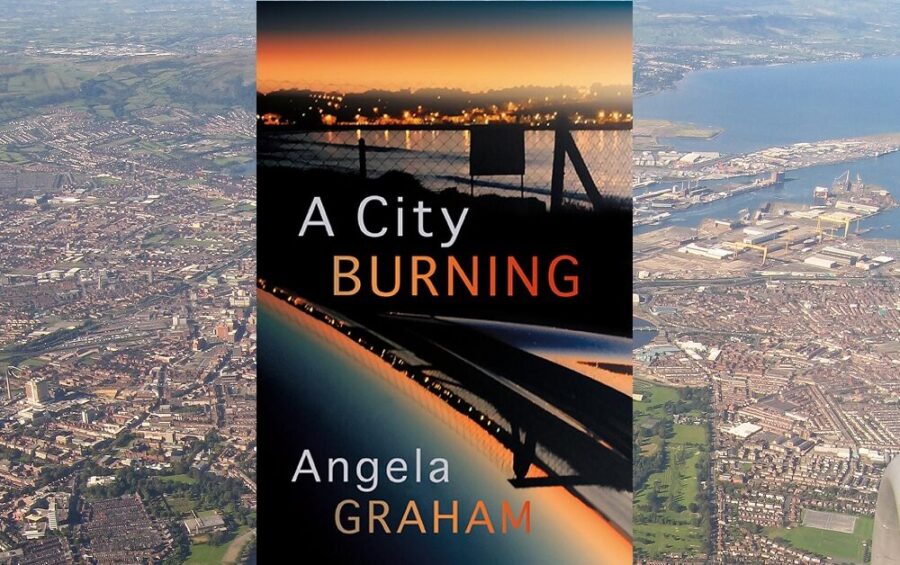
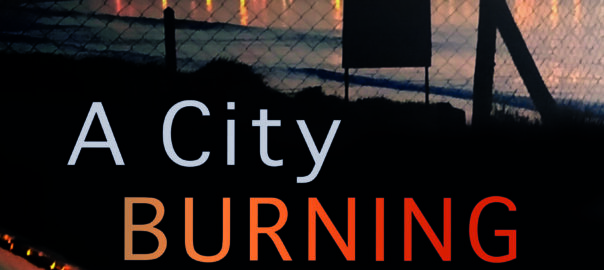
Irish Times Review
A City Burning
Angela Graham
Seren, £9.99
Angela Graham’s debut collection of short stories has been longlisted for the 2021 Edge Hill Short Story prize, and it’s not hard to see why. The film-maker and screenwriter’s move into fiction brings with it an eye for perspective, for the power of the vignette to momentarily depict a whole life. There is a craft in the economy of Graham’s prose, as evocative as it is sparse, and the theme of change resonates throughout the collection, as well as the inherently human fear of it. We are not always prepared for the moment when our lives change for ever, and Graham seeks to capture that sense of knowing and not knowing here, inviting us into an intimacy with her characters that is never forced, and always elegiac. BECKY LONG
It’s good to share good things and there are very good things to share from this year’s Writers’ Symposium (14th January) curated by Jan Carson, presented by Eastside Arts Centre and sponsored by the Arts Council of Northern Ireland.
‘Prophets, Makers and Risk-takers: A Showcase of Writing from Northern Ireland’, this one-day event was an exemplary resource for writers. I will highlight just three sessions.
The Keynote Address was ‘”This Must Be the Place”: Mapping Contemporary Women’s Writing from Northern Ireland’ by Dr. Dawn Miranda Sherratt-Bado (Queen’s University Belfast, Institute of Irish Studies).
Watch it here
This talk exemplified for me a striking feature of the whole day – the advancement of a sense of community for writers in Northern Ireland. The sessions worked against isolation or exceptionalism, fostering a spirit of solidarity in the facing of challenges or success.
Dr Sheratt-Bado’s talk provides a context for writing by women in Northern Ireland, or rather, something much more personal and powerful than that, a sense of family. Here are sisters who have walked the road that we are on. Famliar or new faces and voices. Wonderful!
I bet many of us wondered who we might add to the list. I thought of Marjory Alyn (‘The Sound of Anthems’, St Martin’s Press, 1983; Hodder & Stoughton, 1984) a trenchant novel inspired by the White City estate in North Belfast; a great read alongside ‘Hearthlands’ by Marianne Elliott (Blackstaff Press, 2017).
and, with a little category bending, Welsh novelist, Menna Gallie whose ‘You’re Welcome To Ulster ‘ (Gollancz , 1970) is, arguably, the first ‘Troubles Novel’.
Jan Carson’s session of practical advice for writers could hardly have been bettered. She covered a wide range of topics with a robust practicality and surely no one who heard her would be left in any doubt that promotion of one’s work is part of a writer’s toolkit, if it is done with confident humility, sincerity and a collaborative attitude that thanks people for help and helps in turn.
There can also be no doubt about how hard she works at this aspect of the craft. It inspired me to do a review of my own promotional efforts. I decided to identify one thing that I was aware needed attention. I applied the kind of constructive, problem-solving, let’s-do-this-together analysis that I picked up on in Jan Carson’s approach. I worked out what I could do. I discussed my idea with my publishers and, a couple of weeks on, we’ve made really good progress on the issue.
I also particularly enjoyed the panel discussion on CONTEMPORARY ISSUES IN
NORTHERN IRISH WRITING chaired by Emma Warnock of No Alibis Press with Nandi Jola and Mícheál McCann.
From this session I took away an appreciation of how the obstacles writers face are very much experiences that are common to most writers, rather than being failings experiened by unworthy ones. We can all be confident that it is likely that any problem we might have has been faced, and overcome, by some other writer. Again, that sense of community came through.
See the event Programme here
and the Video Showcase of Writers:
Jan Carson has reflected on the event in a blog: here
Thank you to everyone concerned for a great event.
I’m from East Belfast: hubba tha yooniverse
My collection of 26 short stories A City Burning (Seren Books) set in Northern Ireland, Wales and Italy was published in October 2020.
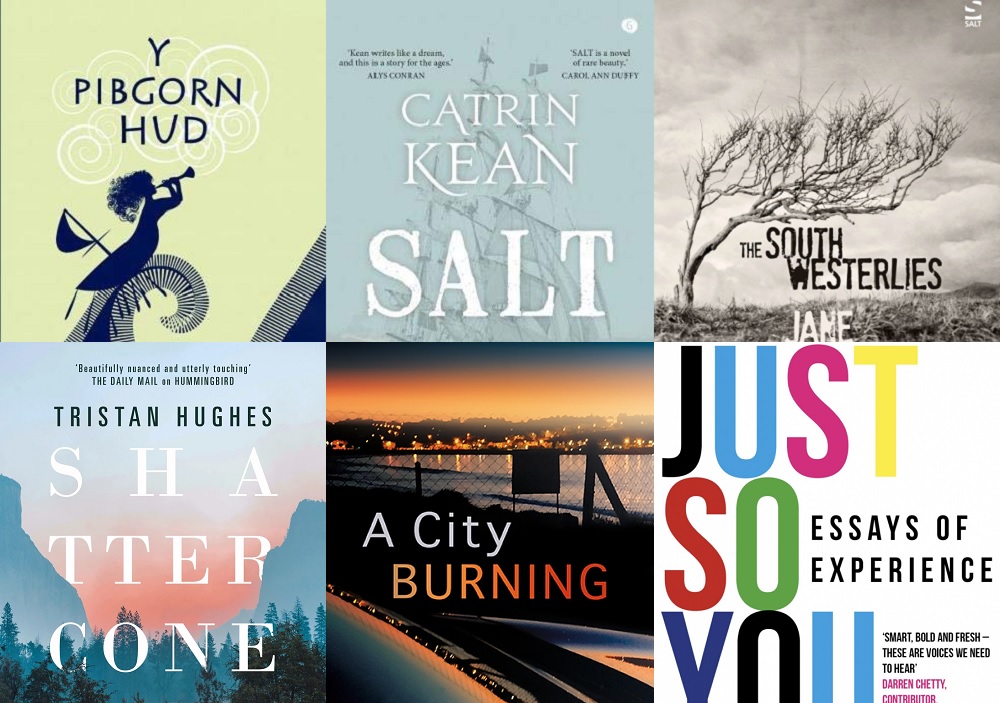
A city burns in a crisis − because the status quo has collapsed and change must come. Every value, relationship and belief is shaken and the future is uncertain.
A CITY BURNING Order here
A Book of the Year 2020 on Nation Cymru and The Lonely Crowd.
“This is an exemplary collection illustrating the creative possibilities of the short fiction form… All the stories allowed me to feel the emotional intensity of a range of characters as they stand at pivotal moments in their lives in the aftermath of personal tragedy. This is due, I believe, to the innate understanding that Graham has for the ‘stuff’ of the short story: suggestion rather than statement; rising tension rather than high drama; the power of the unsaid; and the realisation that endings are not neat and tidy and tied up!” Jane Fraser (The Lonely Crowd)
“a kind of clarity of languag… that rings off the page… a voice that feels completely new and fresh… Graham’s language has a searing quality yet also a humour about it that is genuinely hard to forget long after reading. Very highly recommended – I can’t wait to see what she does next.” Kate Hamer (The Lonely Crowd)
“Angela Graham’s debut collection A City Burning announced a confident, stylish new voice in short fiction.” Jon Gower (Nation Cymru) Continue reading Reactions to ‘A City Burning’
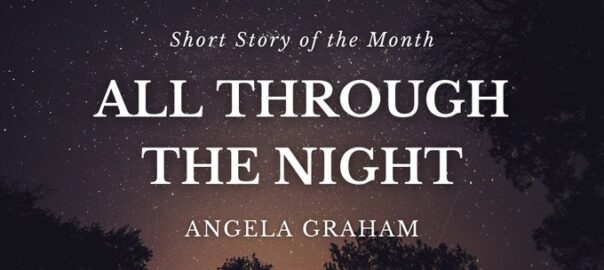
ALL THROUGH THE NIGHT – READ HERE
My story ‘ All Through The Night’ is Seren’s Short Story of the Month for December 2020. An extract from it is beautifully read by Geraint Lewis.
https://www.facebook.com/watch/?v=1026016757821993
The story was first publsihed in Crannóg magazine which nominated it for the Pushcart Prize 2019.
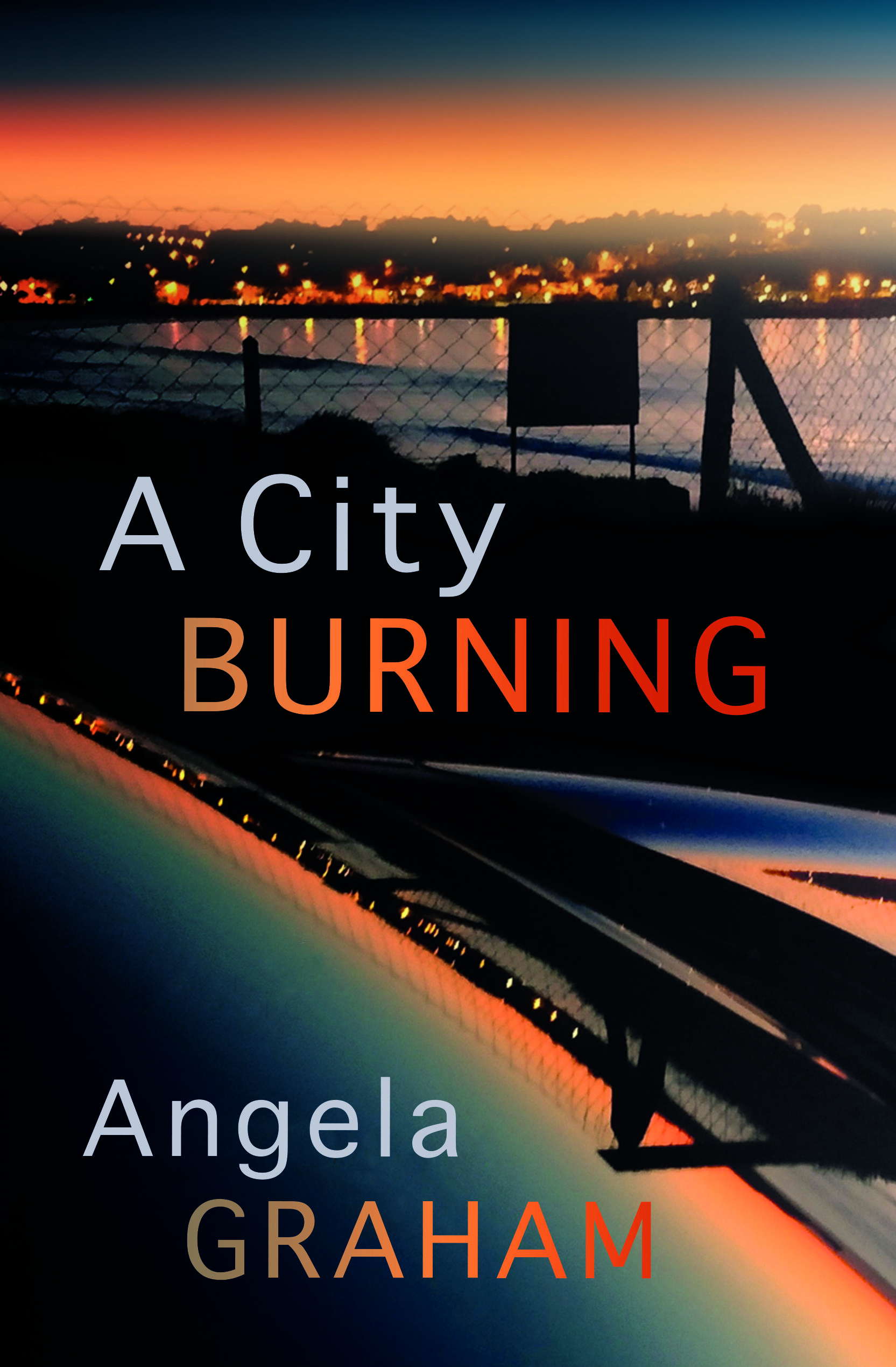

I’m delighted that two authors in The Lonely Crowd’s Books of the Year feature Part One chose ‘A City Burning’ as a highlight of 2020 – Jane Fraser and Kate Hamer
and that Jon Gower selected it too in his Books of the Year for Nation Cymru.
NATION CYMRU
Wales’ Books of the Year, 2020 – what have our contributors been reading?